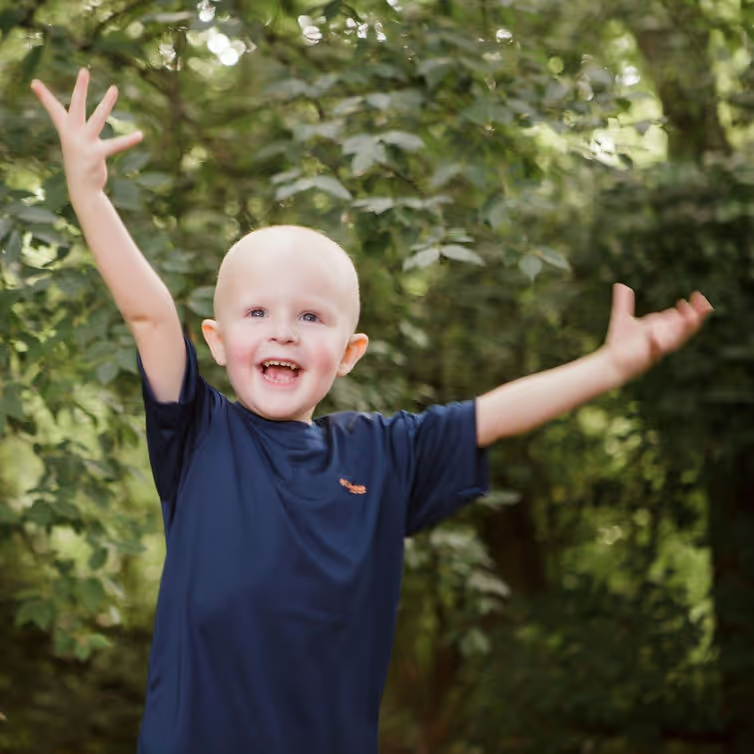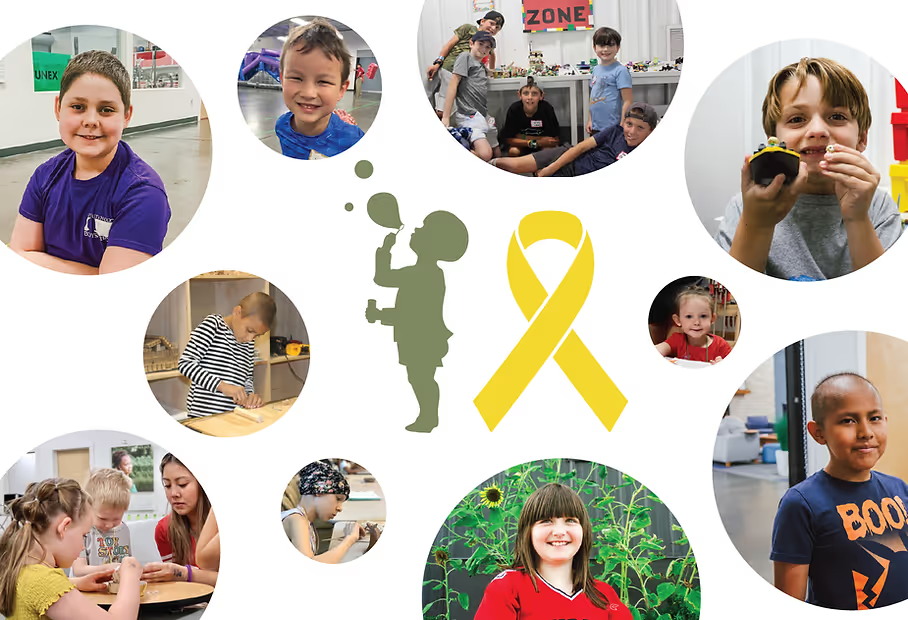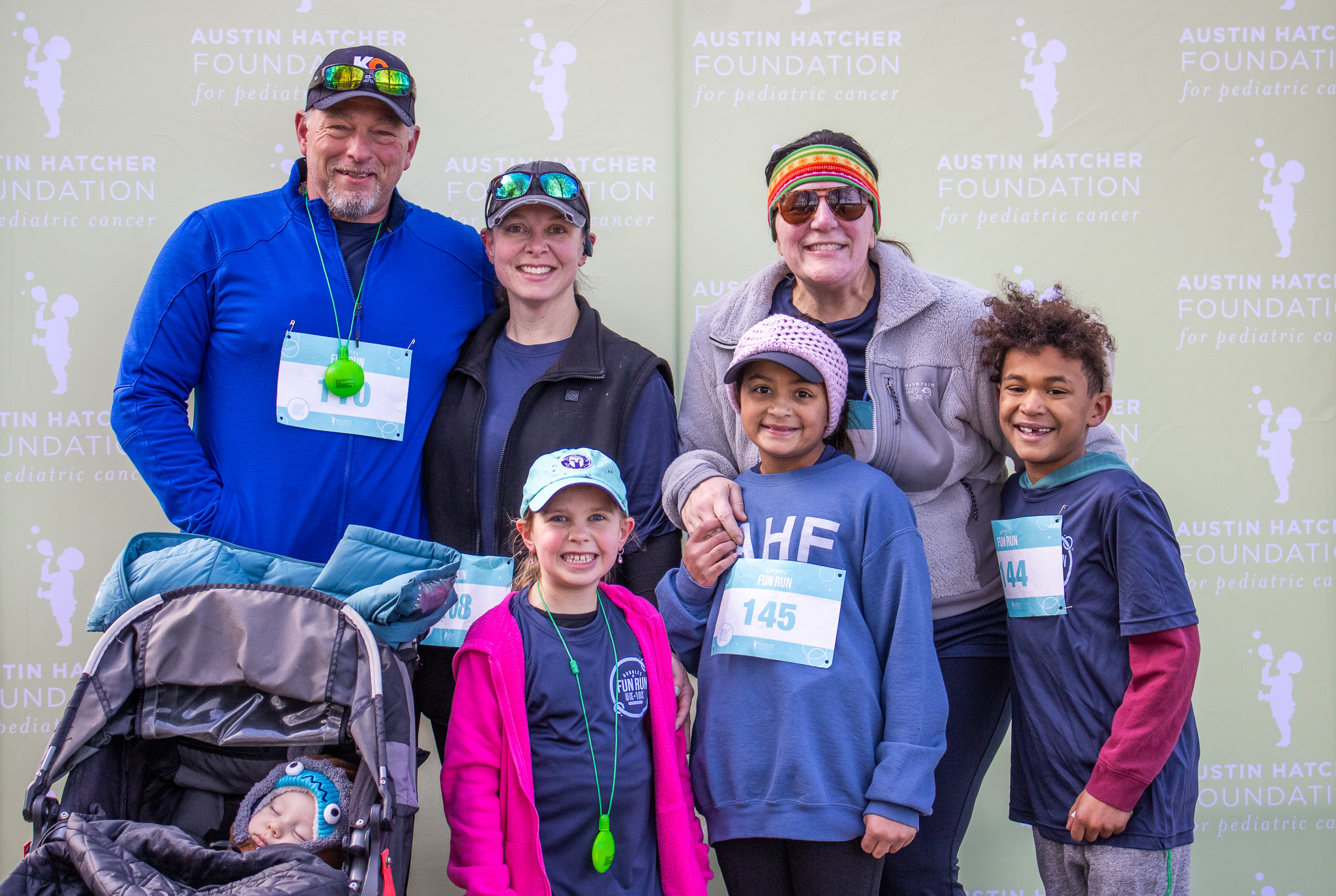Shining a Light: Raising Awareness for Childhood Cancer
Every year, childhood cancer awareness is recognized in September. Since it is important to stay informed, the following blog post dives into facts regarding childhood cancer from the National Cancer Institute (https://www.cancer.gov/).

Prevalence
Childhood cancer is the leading cause of death past infancy in children and adolescents. In 2021, over 15,000 children and adolescents ages 0-19 will be diagnosed with cancer, of which only 13,000 will remain survivors. Among children (aged 0-14), the most common types of cancer diagnosed are leukemias, brain and central nervous system (CNS) tumors, and lymphomas. The most common cancer types among adolescents (aged 15-19) are brain and other CNS tumors, thyroid cancer, gonadal (testicular and ovarian) germ cell tumors, and malignant bone tumors. There are approximately 483,000 childhood and adolescent cancer survivors alive in the United States.
Prognosis
Over the last 50 years, the prognosis for children and adolescents with cancer has markedly improved. In the 1970’s, 58% of children and 68% of adolescents diagnosed with cancer survived at least five years. Between 2011 and 2017, 84.7% of children and 85.9% of adolescents diagnosed with cancer survived at least five years. While overall survival rates have improved in the last five decades, improvements in specific types of cancers, specifically Acute Lymphoblastic Leukemia, have been significant. Acute Lymphoblastic Leukemia (ALL) is the most common childhood cancer. Treatment improvements over the last 50 years have increased the 5-year survival rate for children from 57% in 1970 to 92% in 2021. The cancer mortality among children and adolescents has declined by more than 50% over the last 40 years.
Causes
Cancer is caused by gene mutations that result in uncontrolled, malignant cell growth, eventually leading to cancer. Germline variants are genetic changes passed from parents to children, but only 6-8% of all childhood cancers are caused by an inherited gene mutation. Somatic gene mutations are mutations that are caused after birth, mostly from environmental factors that lead to the alterations of genes. Environmental factors such as cigarette smoke, asbestos, and UV radiation from the sun are known causes of somatic genetic mutations in adults. However, environmental causes of childhood cancer have been difficult to identify. Researchers have identified factors associated with the reduced risk of childhood cancer. Folate, or folic acid, consumption during pregnancy has been associated with a reduced risk of leukemia and brain tumors in children. Exposure to routine childhood infections is associated with a lower risk of developing childhood leukemia.

Where do children and adolescents with cancer get treated?
Children and adolescents with cancer are most often treated at a children’s cancer center. Children’s cancer centers are hospitals or pediatric cancer units within the hospital that specialize in diagnosing and treating patients younger than 20. The physicians, nurses, therapists, nurse assistants, and other health professionals have specialized training in treating childhood and adolescent cancer. Over 90% of children and adolescents diagnosed with cancer yearly in the United States are treated at a children's cancer center affiliated with the Children's Oncology Group (COG). The COG is a National Cancer Institute-supported group and the world's largest organization that performs clinical research to improve the care and treatment of children and adolescents diagnosed with cancer. Children’s cancer centers participating in COG must meet and maintain strict standards of care. Their website, https://www.childrensoncologygroup.org/, offers information related to COG and a list of COG-supported treatment facilities.
Survivorship
Once childhood cancer patients complete their treatment, they enter survivorship. However, the pediatric cancer population will need enhanced follow-up care for the remainder of their lives due to the risk of complications related to their cancer diagnosis or treatment. Health problems can develop months or years after treatment. These health problems are known as late effects. While advancements in treatment in recent decades have significantly decreased the prevalence of late effects, it is essential to keep regular medical follow-ups so that any health problems can be identified and treated as promptly as possible.
It is vital to keep a detailed record of the cancer diagnosis and treatment received. This record should include:
- Type of cancer
- Stage of cancer
- Date of cancer diagnosis
- Date of any cancer relapse
- Genetic testing
- Type and date of imaging tests
- Contact information for doctors
- Contact information for treatment locations/hospitals
- Types of cancer treatments received
- Dates of chemotherapy
- Dates of radiation therapy
- Parts of the body that were treated with radiation
- Any complications related to treatment.

How AHF supports the child and adolescent cancer patient population
The Austin Hatcher Foundation for Pediatric Cancer (AHF) has built its mission around assisting pediatric cancer patients and their families with improving the quality of life during and after a cancer diagnosis. AHF provides mental and behavioral health services such as counseling, therapy, grief groups, occupational therapy, family programs, art and music therapy, neurocognitive testing, educational resources and more. All services help families cope with a childhood cancer diagnosis and thrive in the future for the entire family’s entire lifetime, all at no cost.
You will find resources, volunteer opportunities, family programs, and events on the Austin Hatcher Foundation website (www.hatcherfoundation.org ). Online resources include webinars, occupational therapy resources, telehealth appointments, grief support, and more. AHF provides in-person care to thousands of families through mental and behavioral health services and family programs. Family programs for September include Honoring the Journey, Young Adult Night, Children’s Grief Support, and Adult Grief Groups.

All services are provided at no cost. Services are funded entirely by sponsors, donations, and support. AHF’s largest fundraiser is approaching: the 2023 Celebration of Life & Hope. This is a gala-style event full of family testimonials accompanied by live and silent auctions, live music, photo booths, an open bar, food, and entertainment. The 2023 Celebration of Life & Hope takes place on the last day of September to honor Pediatric Cancer Awareness Month.
Resources:
Cancer in Children and Adolescents https://www.cancer.gov/types/childhood-cancers/child-adolescent-cancers-fac
About the Author

My name is Rachel. I am a registered nurse and I have a passion for oncology nursing. I received my BSN from The University of South Carolina in 2012 and my MSN in Nursing Administration from the University of Alabama in Huntsville in 2019. My very first job as a new graduate was on an inpatient medical oncology floor. I fell in love with the patients, their families, and the love and care all the doctors and nurses showed not only the patients but each other. I never wanted to leave that environment so I devoted myself to becoming an oncology nurse. I am currently taking my knowledge base and pursuing my passion to write to embark on the journey to becoming a freelance nurse writer.




.png)
.png)
